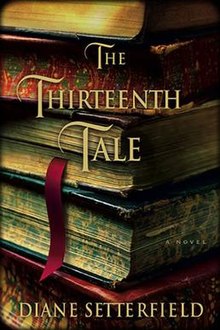
I started seeing Moomins popping up in reviews all over the place, and discovered that that it is #Moominweek! Literary Potpourri and Calmgrove have set this up, and even though I was late to the party, I rushed off to read Moominsummer Madness (1954) translated by Thomas Warburton – handily also ticking the Women in Translation Month box.
Tove Jansson is one of my favourite writers – you can click her name in the tags/categories section and find all of the other reviews I’ve done – but I’ve only read one Moomin book before. She is so brilliant in her adult novels and short stories at piercing relationships between people who aren’t quite able to communicate, whether that be the beautifully unsentimental meeting of grandmother and granddaughter in The Summer Book or the who-is-fooling-whom darkness of The True Deceiver. How does that translate to a world not about humans, but instead about moomins and their ilk?
In Moominsummer Madness, a nearby volcano causes tremendous flooding in Moominvalley.
In the fair night they could see something enormous rise high over the tree-tops of the forest, like a great wall that grew and grew with a white and foaming crest.
“I suppose we’d better go into the drawing-room now,” said Moominmamma.
They had no more than got their tails inside the door when the flood wave came crashing through the Moomin Valley and drenched everything in darkness. The house rocked slightly but didn’t lose its foothold. It was soundly built and a very good house. But after a while the drawing-room furniture began to float around. The family then moved upstairs and sat down to wait for the storm to blow over.
The whole house is soon under water. Somehow they rescue food from the kitchen (why is bread edible after it’s been floating around in floodwater? Maybe we shouldn’t ask such questions) and they don’t seem very perturbed by the turn of events. Calmness is key. And, calmly, they adopt another house that floats by.
At first they are worried that they are evicting someone else, or that the residents have perished in the flood. What the reader works out pretty quickly is that this is a floating theatre. The world of stage, props and backdrops is foreign to Moominmamma, Moominpappa et al, and it’s fun to see them discovering what’s going on – helped, sort of, but a grumpy rat (Emma) that lives in the theatre and speaks often of her late husband (who passed when the iron curtain fell on him).
Along the way, some of the gang get arrested for complex reasons, and there are various sidelines about combatting an overly authoritative park keeper and adopting a group of ‘woodies’. There’s a lot going on in quite a short book, and that’s partly because it is a constant chain of events – the characters seem to take most things in their stride, so there isn’t all that much describing their reactions. But there is some lovely humour along the way. I enjoyed Jansson’s riff on the theatre:
‘I want a lion in the play, at all costs,’ Moominpappa replied sourly.
‘But you must write it again, in blank verse! Blank verse! Rhymes won’t do!’ said Emma.
‘What do you mean, blank verse,’ asked Moominpappa.
‘It should go like this: Ti-dum, ti-umty-um – ti-dumty-um-tum,’ explained Emma. ‘And you mustn’t express yourself so naturally.’
Moominpappa brightened. ‘Do you mean: “I tremble not before the Desert King, be he a savage beast or not so savage”?’ he asked.
‘That’s more like it,’ said Emma. ‘Now go and write it all in blank verse. And remember that in all the good old tragedies most of the people are each other’s relatives.’
‘But how can they be angry at each other if they’re of the same family?’ Moominmamma asked cautiously. ‘And is there no princess in the play? Can’t you put in a happy end? It’s so sad when people die.’
‘This is a tragedy, dearest,’ said Moominpappa. ‘And because of that somebody has to die in the end. Preferably all except one of them, and perhaps that one too. Emma’s said so.’
Not being super family with the family and add-ons, I couldn’t remember much about people’s characters. They are sketchily reintroduced, so I know that Moominmamma is reassuring and calm, Moominpappa is kind and imaginative, Little My is angry and looking for affection etc. But I have to admit that I can’t quite get past them all being non-human, made-up creatures. I realise that it is an imaginative failing in me, but though I enjoyed reading Moominsummer Madness, I’d have enjoyed it more if they were all humans and the story was surreal rather than fantastic.
I’ll probably keep reading Moomin books now and then, because I want as much Jansson as I can get. And, yes, this was fun. But I’m so glad that there are plenty of non-Moomin books out there to show how brilliant Jansson was at her best. (Sorry not to write a wholly enthusiastic post for #Moominweek, but I’m glad to participate nonetheless!)








